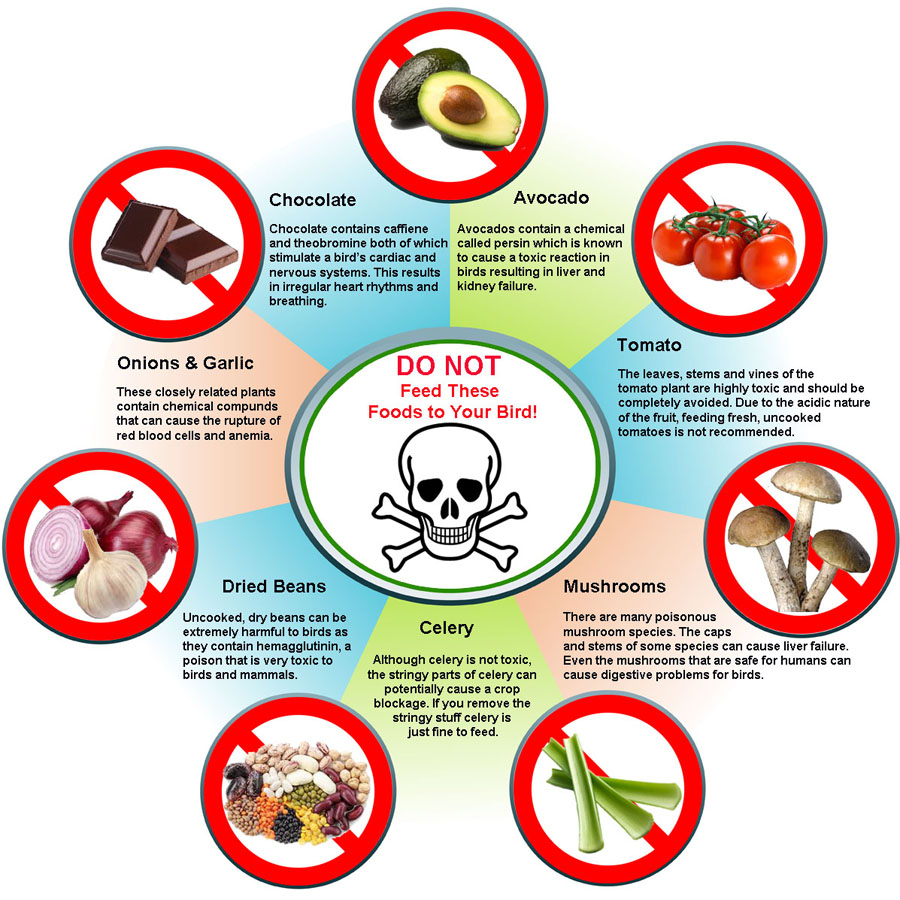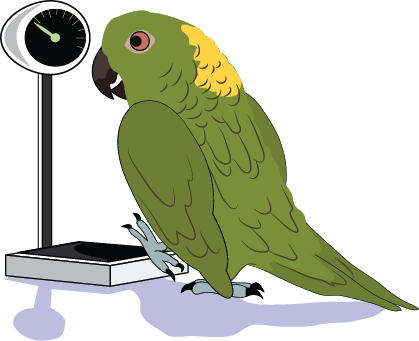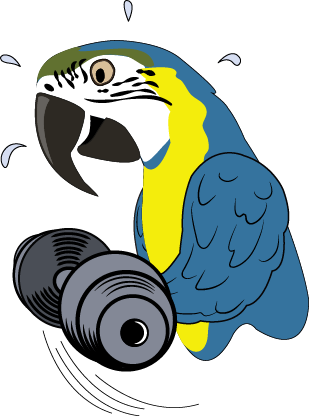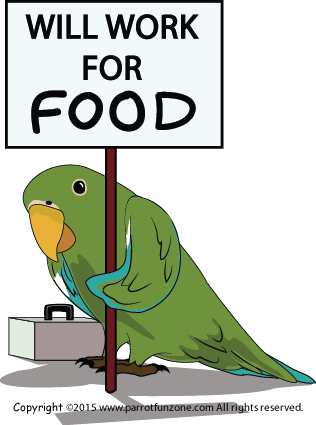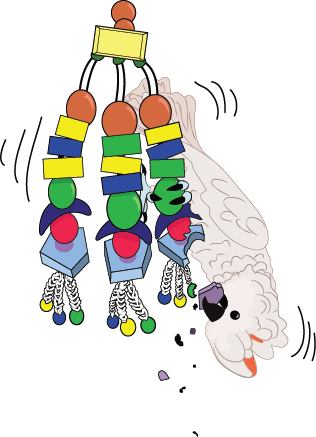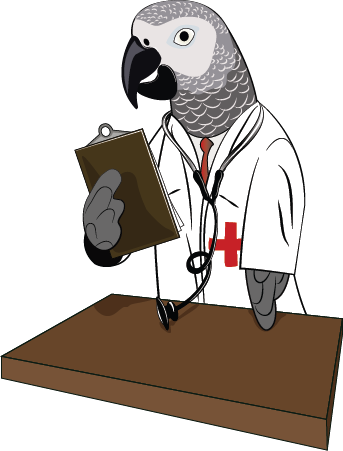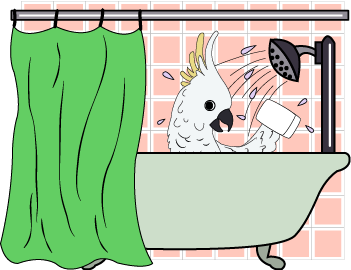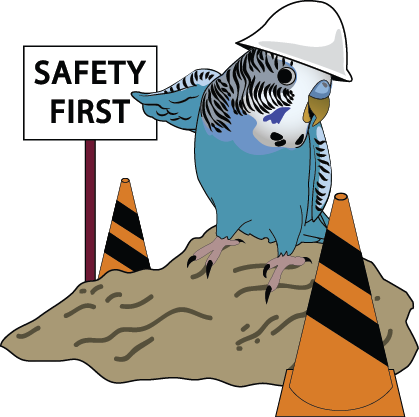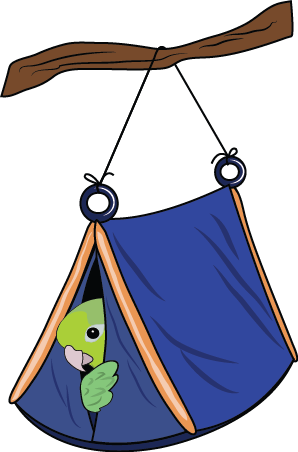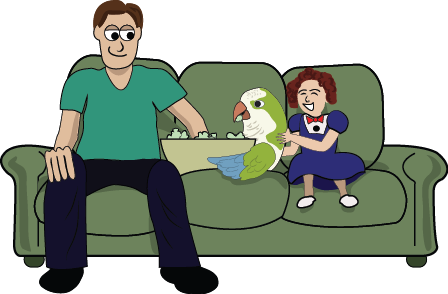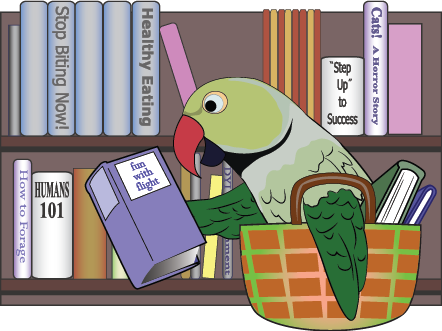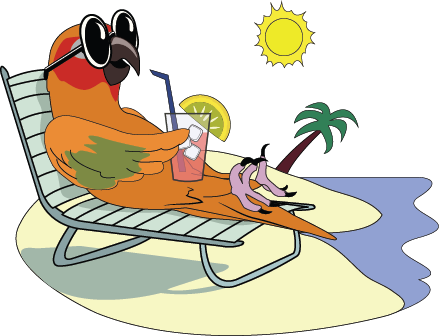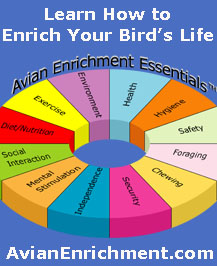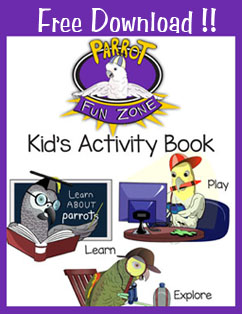|
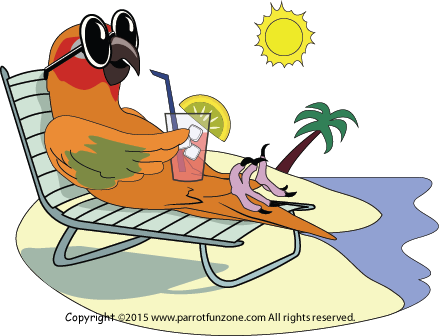 Providing the Best Environment for your Bird Providing the Best Environment for your Bird
Birds need stuff and lots of it! Birds in nature are surrounded by a very diverse environment filled with challenge, opportunity, risk and reward. They have endless choices when it comes to defining their territory, what they eat, choosing their mate and where they perch and sleep.
We can't even come close to creating that kind of environment in our homes but we can strive to do our best to offer a wide variety of safe enrichments to our birds some of the key areas that need to be addressed are listed below:
Cages
The single most important item you will ever purchase for your parrot companion is its cage. Compared to the freedom they experience in the wild, our parrots are severely restricted in captivity. A cage is your bird's primary environment and it is of the utmost importance that they be able to move freely, flap their wings, climb, play, do acrobatics, forage and perch at multiple levels within that environment.
The first rule when choosing a cage is to buy the largest possible cage that you can afford from both a space and financial perspective.
Besides cage size, there are many factors that must be considered in making a safe and appropriate choice for your bird including:
- Style (dome vs. playtop)
- Construction (metal, acrylic, powder coated, stainless steel)
- Bar Spacing - Your parrot should not be able to put its head through and get wedged in the space between the bars.
- Bar Strength - The diameter and strength of each bar should be large enough to ensure that the bars can not be bent or broken by your bird.
- Bar Orientation (a mixture of horizontal and vertical)
- Ease of maintenance
These requirements can vary by bird species so it is best to take the time to research what would be the safest for your particular bird.
Perches
Your bird is on their feet 24/7. In the wild, they have a multitude of choices of where to perch and can fly from branch to branch giving their feet and legs exercise. In nature, parrots are also exposed to branches of various sizes, widths, and orientations. The perches in your bird’s cage should mimic these natural conditions as much as possible.
By providing the proper variety of perches in your bird's cage you can help to prevent foot problems such as arthritis, tendonitis, atrophy or pressure sores from developing.
Perches are available in a wide variety of natural and synthetic materials. A minimum of three different types of perches should be in your bird's cage. Since birds often like to sleep in the highest place that they can perch in their cage, it is recommended that the most comfortable perch be placed in this position.
Play Areas
Setting up outside of the cage play areas is a great way to offer your bird the opportunity to be in different areas of your home and to interact in a wider variety of manners with their human flock. There are many types of play areas including floor, table top and hanging varieties. No matter what the form, if properly designed and equipped, they offer the benefits of:
- Increased opportunity for exercise.
- Increased mental stimulation through added interaction and visual stimulation.
- Enhanced learning opportunities through exposure to new experiences.
- Better socialization and a stronger sense of belonging to the flock (emotional security).
- A safe and secure place for your bird to play.
Well-designed play areas have:
- multiple play levels to promote movement through climbing
- an easy to clean base that catches droppings
- removable food cups
- multiple hooks to allow for the addition of stimulating toys
- varied perch diameters to promote foot health
Toys
Toys are not just playthings to birds and they are not optional accessories. There are several different categories of toys and they can serve many different purposes. Toys are key to addressing our bird’s physical , instinctual and emotional needs. So what do toys mean to our birds? Toys can be:
- a boredom buster that helps to prevent behavioral problems
- an opportunity for exercise (swings, ladders, bungees)
- an outlet for birds to expend excess energy
- an outlet for aggression and stress relief
- a source of comfort (soft texture toys, preening toys, shelter toys)
- a mental challenge that rewards efforts with a treat (foraging toys)
- an outlet for a bird’s chewing instinct (destructible toys)
Birds need to have a variety of toys across the various toy categories (destructible, foraging, preening, exercise) as well as variety within the categories. A minimum of 3-4 toys should be in your bird's cage and the toys should be rotated periodically as variety will help to alleviate boredom and keep your bird more curious and active.
|







































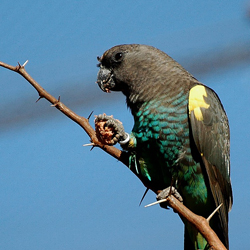


































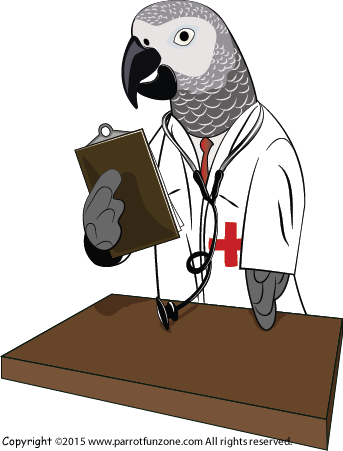

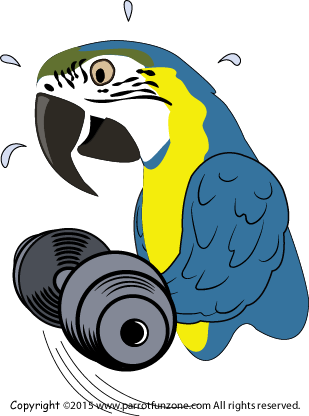 Our pet birds are not as active in our home as their wild cousins are in their native environments. Wild parrots have to fly many miles a day in the search for food.
Our pet birds are not as active in our home as their wild cousins are in their native environments. Wild parrots have to fly many miles a day in the search for food.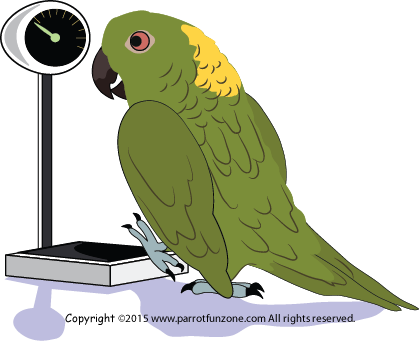 Just like we need to eat a balanced diet to ensure we are healthy and our bodies function right, the same is true for our birds. Feeding your pet bird a good, healthy diet is essential to its long-term health.
Just like we need to eat a balanced diet to ensure we are healthy and our bodies function right, the same is true for our birds. Feeding your pet bird a good, healthy diet is essential to its long-term health.